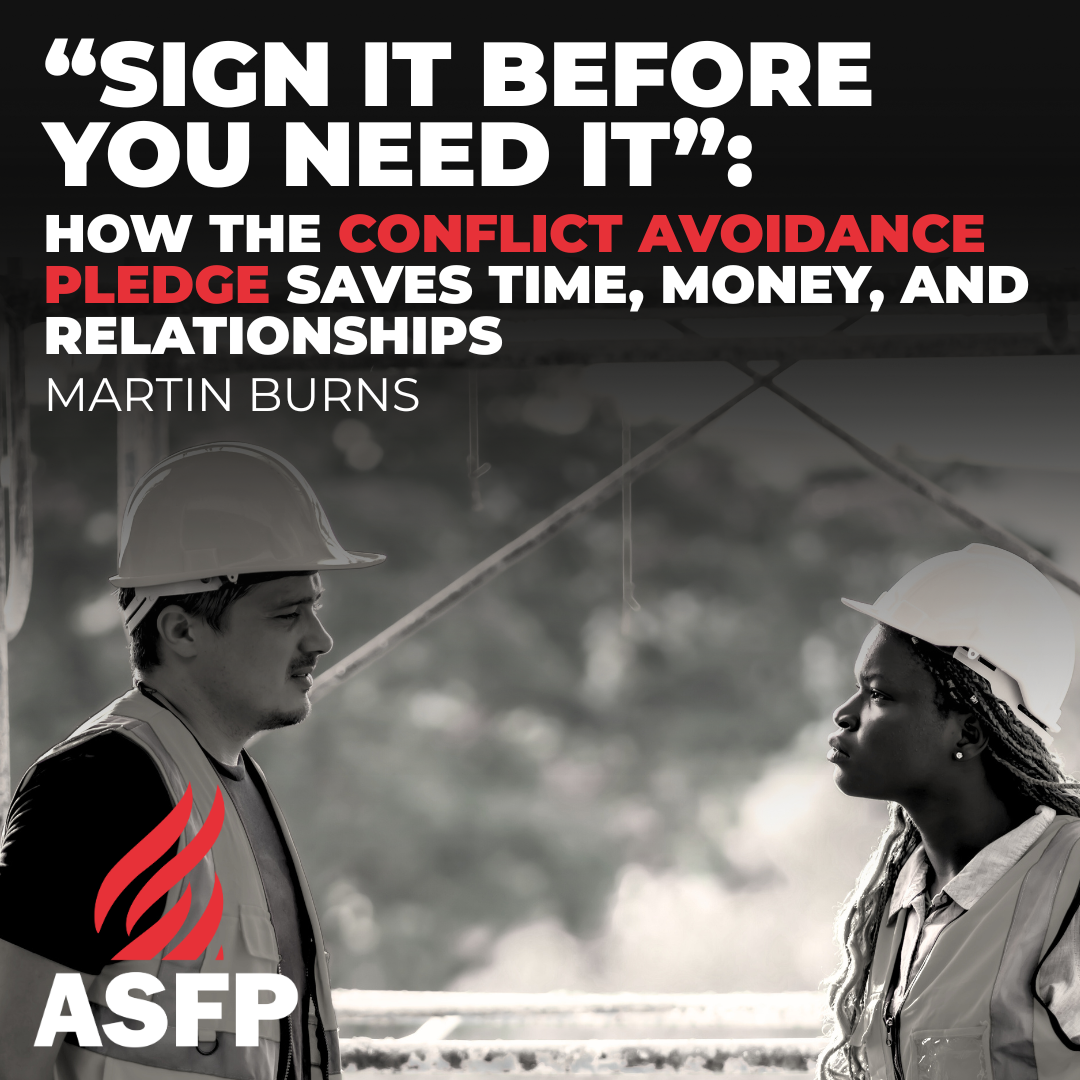“Sign It Before You Need It”: How the Conflict Avoidance Pledge Saves Time, Money, and Relationships
02 June 2025
 Martin Burns is Head of ADR Research & Development at RICS, where he leads initiatives to improve conflict resolution practices. He is a prominent advocate for early intervention and collaboration in the construction industry. Martin Burns is Head of ADR Research & Development at RICS, where he leads initiatives to improve conflict resolution practices. He is a prominent advocate for early intervention and collaboration in the construction industry.
Martin: As someone who has spent over 35 years immersed in the world of dispute resolution, I’ve seen the damage conflict can do to relationships, reputations, and the bottom line in construction. Time and again, costly disputes arise not because they’re inevitable, but because warning signs are ignored and the opportunity for early intervention is missed. That’s why I strongly advocate for the Conflict Avoidance Pledge (CAP). The Conflict Avoidance Pledge is a simple but powerful commitment. It asks organisations to work collaboratively, intervene early, and manage disagreements before they escalate into formal disputes. By signing it, a business signals its dedication to building a culture where potential conflicts are managed constructively and proactively. The Pledge's key principles are clear. It promotes collaborative working from the outset, encourages early warning systems and intervention mechanisms, and calls for the integration of conflict avoidance strategies into the fabric of projects. It also urges organisations to allocate proper resources, develop internal skills to spot and manage issues, and work with others in the industry to embed these practices more widely. The Pledge isn’t just a statement of good intentions. It was launched by the Conflict Avoidance Coalition - an alliance formed in 2017 that includes major professional bodies like RICS, the Institution of Civil Engineers, the Chartered Institute of Arbitrators, and organisations such as Network Rail and Transport for London. Together, we’re encouraging a shift in the industry’s culture, moving away from adversarial approaches toward one built on mutual respect and early problem-solving. Over the years, we’ve introduced a tiered recognition system for signatories. Bronze-level signatories have made the commitment. Silver-level organisations have taken steps to integrate conflict avoidance policies into their operations. Gold-level signatories have gone even further, embedding these practices across all their contractual relationships and actively promoting collaboration and early resolution. These aren’t just ideals - they work in practice. Transport for London, for instance, has adopted the Conflict Avoidance Process on more than 20 projects and seen a measurable reduction in legal claims and associated costs. Other signatories report similar benefits: faster delivery, reduced stress, and better working relationships across the board. What’s especially encouraging is that this initiative has support at the highest levels. It’s referenced in the UK government’s Construction Playbook and backed by central and devolved governments alike. That kind of endorsement reflects the Pledge’s growing importance and impact. In my experience, the real question isn’t “Why should you sign the Conflict Avoidance Pledge?” but “Why wouldn’t you?” Making this commitment signals not only a dedication to best practice but a willingness to be part of an industry-wide cultural shift—one that delivers better outcomes for everyone involved. If you want to be part of this change, I encourage you to learn more and add your organisation’s name to the growing list of signatories. Visit www.rics.org/capledge. You can also hear more about the principles and impact of the Pledge by watching my recent discussion here: Conflict Avoidance: Collaboration, Compliance & Culture Change.
|